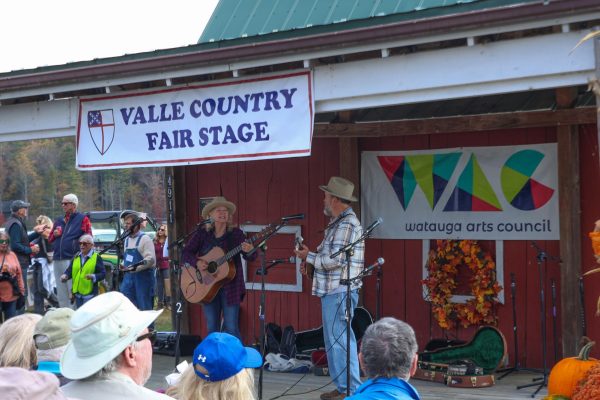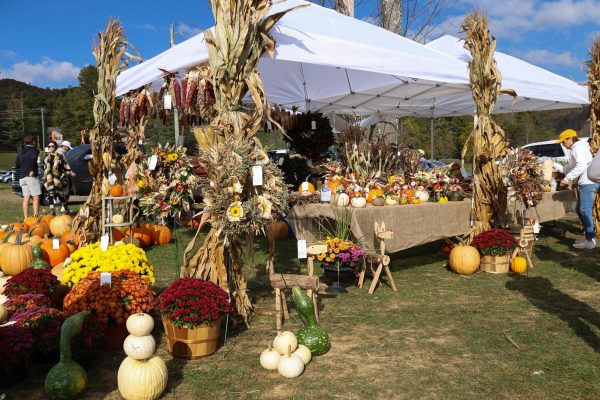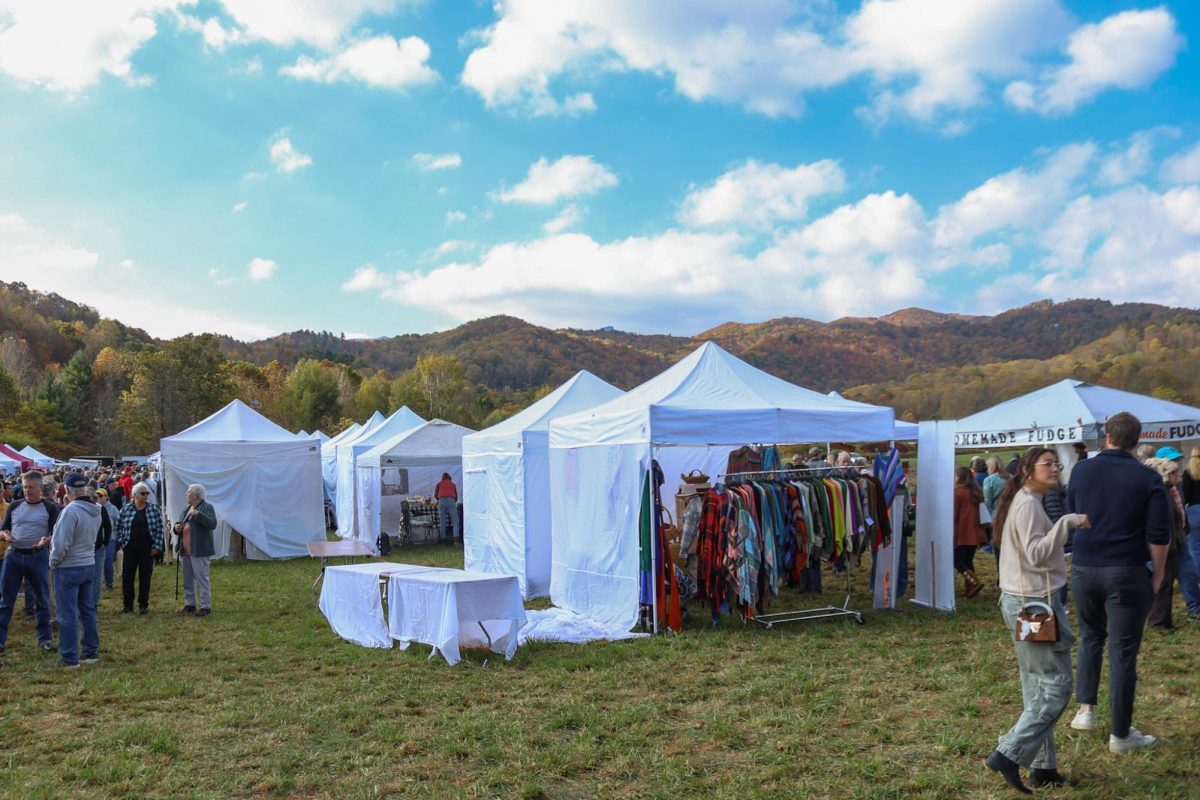On most days of the year, those driving by Holy Cross Episcopal Church in Valle Crucis would see a miniature stone church across from a barren field. If you were to drive by it on the third Saturday of October, your eyes would be met with intrigue.
On that usual empty plot, a multitude of white tents, a sea of cars and the sounds of a Bluegrass band bellow across the maze of the Valle Country Fair attendees checking the wares of humble vendors.“We’ve had a very good crowd today, a lot more people were here around in the middle of the day enjoying good food and entertainment,” said Carolyn Shepherd, a volunteer at an information booth near the entrance.

When she was not pointing people in the right direction, Shepherd had another role vital to the event. She heads the arts and crafts exhibitors who vote on what vendors will be at the fair.
“Most of our vendors selling their wares come back each year,” she said.
The fair returns in good spirits this year while acknowledging the impact of Hurricane Helene. With Valle Crucis in the path of Helene’s devastation, it too was one of the many communities impacted.
Like many events, the fair was canceled in 2024 due to the damage and dangers of the fair’s set location. This created challenges for not only the vendors but the nonprofits which a portion of the fair’s proceeds go toward.
“The Valle Country Fair and the Wolly Worm Festival are two really important festivals because they bring in hundreds of thousands of dollars both through tourism and what they put back into the community,” said Amber Bateman, executive director of the Watauga Arts Council. “When you can’t have a festival like that, there is this ripple effect that happens where the artists are hurting. This could be one of their biggest days of the year.”
Bateman’s mother, Connie Cox, said she felt that blow, being that she is a sculptor.
“The place I get clay is no more,” Cox said.

Bateman said the art council’s goal is to help foster art in the High Country. With artists losing everything from their studios to the materials they needed to create, the council supported artists in any way they could. This included access to electricity and a kitchen, campaigns raising money, assistance in applying for grants and providing programs for material replacement.
Though what happened to the fair in 2024 is history, it was able to bounce back this year. Vendor Wilson Harris said he was looking forward to the return because he would be on the other side of the table, selling his own art while putting some of the proceeds toward his community.
“I felt that was another piece of being a part of the community,” said his mother, Dawn Harris. “You can not only use art to make a living and money yourself, but you can also use it as a way to give back to the community.”


